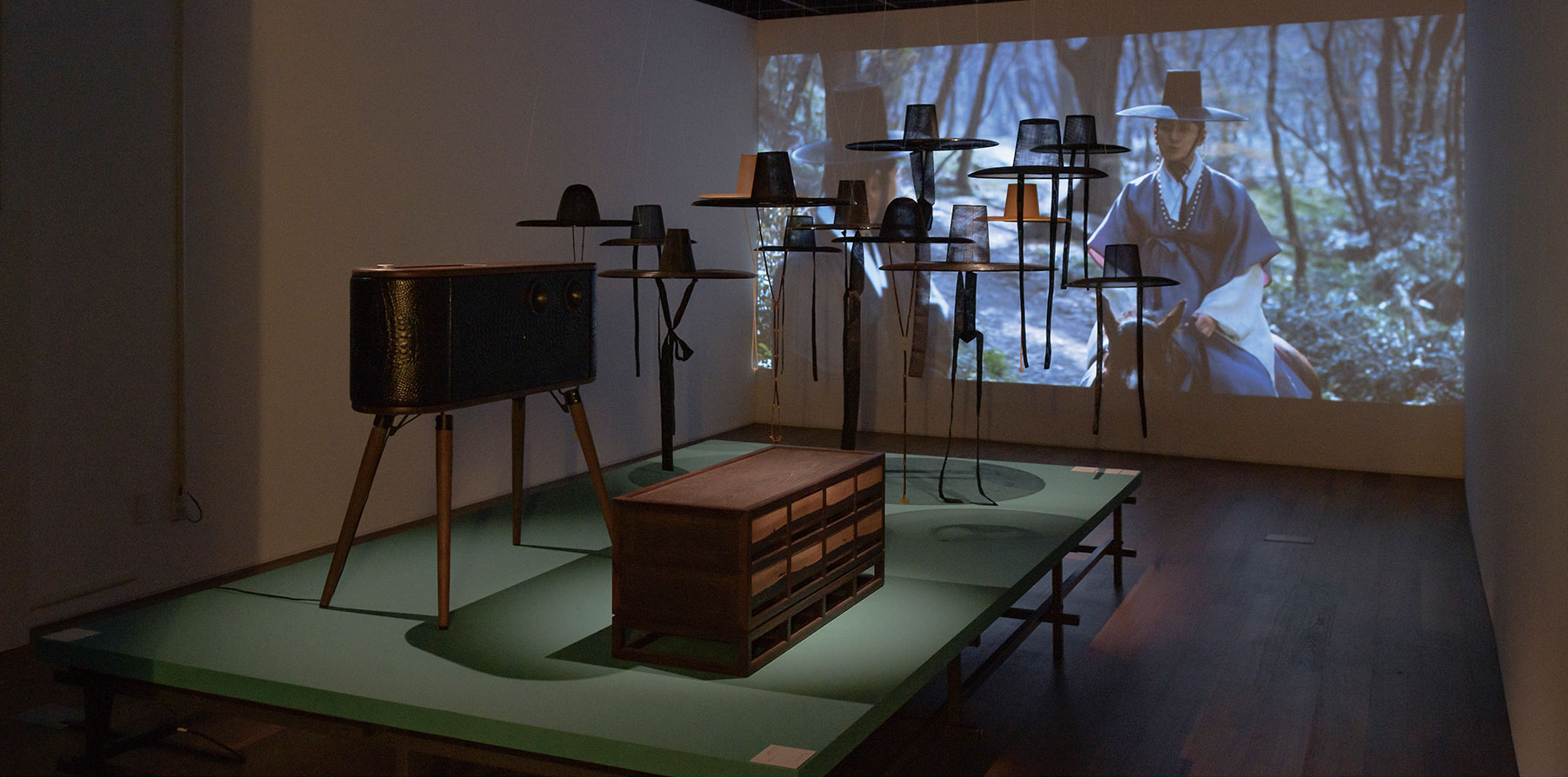STORY
Gat Fashion?
Traditional Men’s Hats
To most Koreans, the gat is a traditional hat for men mostly seen in historical dramas and movies or history books. Yet a hit historical Korean series available worldwide has piqued global interest in the hats, with many fans saying they “gat” to have it.
Written by• Oh Se-won
(Curator & Director at CR Collective)
When Netflix premiered its historical K-drama “Kingdom” early last year, the ensuing global fame of the zombie-themed series spawned a fixation on the traditional men’s hat gat. Fans, many of whom were unfamiliar with Korea, grew captivated by the strange headgear worn even indoors by the nobility of the Joseon Dynasty era, a time when a gat signified the wearer’s social class and function. Gat-related content raked up a sudden surge of views on social media and online discussion forums, and this spurred an unprecedented uptick in sales by e-commerce sites shipping worldwide as well as offline souvenir stores at traditional locales in Korea. Many Koreans observed this craze with amusement, but also realized how little they knew about the hats like those abroad. Familiar only in appearance mostly from historical dramas and films, Koreans rarely see the hats in real life, much less try them on.
Rediscovered Aesthetics

(top)The Netflix Korean drama “Kingdom” is a worldwide hit. © Netflix
(bottom)Forip, a type of gat, consists of the chongmoja, the top part of the hat made of horsehair, and the yangtae, the brim made of bamboo and covered with silken cloth. © shutterstock
Korea’s rapid modernization and industrialization have seen the quick replacement of traditional cultural assets with modern products from abroad. Remnants of tradition have been sidelined to museum exhibitions and staged imagery. Last year, the exhibition “The Praxis” hosted by the Korea Craft and Design Foundation probed these issues. The section “Artwork, gat” displayed traditional objects of function like pottery and najeonchilgi (seashell-lacquered surface ornamentation) furniture in a manner highlighting their esthetic qualities instead of their practicality. A popular piece showed a reenacted scene from a drama (a leading actor wearing a gat while mounted on a horse) set against various gat hung at viewer eye level. Gat in red and white were also displayed to counter the all-too-common imagery of those in black. Since white hats were worn by commoners in times of national mourning, the market price of a white gat rose up to ten fold when the emperor passed away.
Production and Finish

The production of yangtae commences with bamboo. Young bamboo two to three years old are cracked and trimmed of its tender parts. © Park Soon-ae, Studio Soodal
Gannil, or the craftsmanship and making of the hats, begins from the crown of the gat (chongmoja). Juksa (bamboo threads) are woven and attached using scorched iron, then a flat yangtae (brim) is molded and the finish is applied. Even this brief overview of gannil gives a glimpse of what painstaking effort and time go into the process. Though modernization has led to the decline of gannil, artisans who have preserved the craft are designated Intangible Cultural Property and classified as chongmoja-jang (crown weaver), yangtae-jang (brim maker) and ipja-jang (assembler). “The Praxis” exhibition showcased the works of ipja-jang alongside Chinese knockoffs to differentiate the excellent craftsmanship of expertly made gat, thus gat commonly sold are inadequate portrayals of the quality of the nation’s ancestors.
The elegance of curves and lines adds another distinction to the hat. Besides indicating societal position, a gat embodies the spirit of presenting oneself with propriety through clothing. Gat artisans devote numerous hours not only to learning the cultural contexts of bygone times but also honing their technique. From selecting the optimal tools and maximizing efficiency to properly treating the materials before adding a formative touch, artisans must be devoted to the exhaustive process.
Symbol of Evolved Values
Though worn in slightly varying styles according to class, the hats were exclusively used by the upper class until 1895. In the years leading up to ordinary people receiving permission to wear a gat, a national decree for short hair (as men customarily wore long hair) was followed by the Western import of bowler hats. To ensure standardized outfits and proper presentation by the people, the allowing of laymen to wear gat is said to have had a considerable democratizing impact.
Gat also stirred interest in ancient Korean traditions during and after the exhibition. Both foreign and domestic exhibitors expressed heightened interest in traditional cultural assets from Korea. Thus the global explosion of Hallyu could provide a stage for gat and other traditional relics from Korea’s past to see a renaissance of interest and use.

The designs of gat artisan Yang Geum-mi come with a modern touch. © Park Soon-ae, Studio Soodal




















